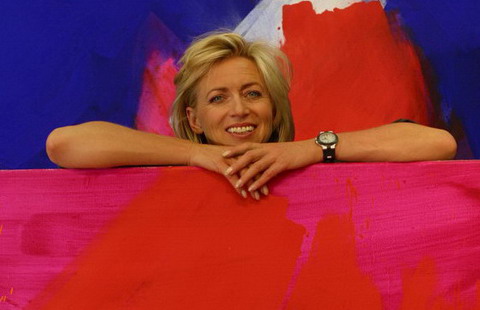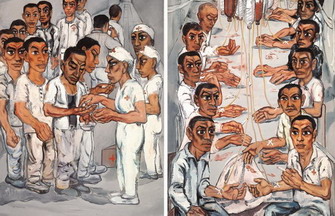Giants with a light touch
By Mariella Radaelli ( China Daily ) Updated: 2013-11-25 16:51:21
|
Li Chen says he is pleased at the response to his exhibition of 12 huge bronze sculptures at the Place Vendome in central Paris. Photos Provided to China Daily |
When you look at Li's sculptures from a distance, they appear light, almost insubstantial, although the material used to make them couldn't be more solid: bronze, traditionally the king of sculptural materials. But how is Li able to infuse his giant works with this sense of levity?
"Black is a heavy color, but when we close our eyes during meditation, it becomes light and empty," he says. "Therefore, I modify them structurally to create a kind of visual effect of monumental levity by incorporating black material with abstract energy - qi."
He enjoys every second of the creative process, "as if I were flying, yet not in the sense of drifting away, but in terms of pure transcendental enjoyment".
Li is familiar with numerous art forms, and is especially fond of primitive art.
"But most of my techniques were inherited from the Eastern tradition," he says. "And even though I spent seven years struggling between tradition and individual expression, it is Eastern culture that stands beside the cradle of my art."
Li believes art teaches us reverence for life and understanding of its value and meaning.
"I'm not sure whether my work can produce any real meaning or value, but it contains subtle messages. For example, in Floating Heavenly Palace I pose the question: What are you seeking? I don't give an answer. My purpose is solely to pose the question. I hope the viewers can relate a piece of themselves to my sculptures."
Li's art talks to anyone, to ordinary people. "Yes, this is part of my purpose," he says.
Li started drawing at 7 years of age and sculpting when he was 17.
"I explore physical strength through this art form. The possibilities and imagination involved are both unlimited and unrestrained. That is why I chose sculpture as my personal language."
The more than 9-meter-high Floating Heavenly Palace took Li almost a year from bone structure, clay model and casting to final assembly.
Li says that during this process he goes into a sort of trance.
"When I am creating the prototype, I forget about time, and even to eat. Everything around me seems vague, as if I do not exist. Only the movement of my hands and the sculpture in front of me are distinct."
Looking at the bigger picture, Li believes the creative boom in contemporary Chinese art is no flash in the pan.
"Chinese contemporary art has just begun, and new emerging concepts and lifestyles are being incorporated into our cultural tradition. China must be proud of its thousands of years of cultural heritage, which is stimulating the vitality and diversity of the contemporary art scene."
Li is pleased that Parisians have enjoyed his exhibition. "Most Europeans said they saw the monumental levity. That is certainly the greatest encouragement," he says.
Li believes that art can be therapeutic. "Yes, art can heal," he says. "When an artist suffers, he is healed through his creating. On the other hand, when an artist is joyful, viewers can experience that joy, too."
|
|
|
|
|
|
|
|























 Raymond Zhou:
Raymond Zhou: Pauline D Loh:
Pauline D Loh: Hot Pot
Hot Pot Eco China
Eco China China Dream
China Dream China Face
China Face





